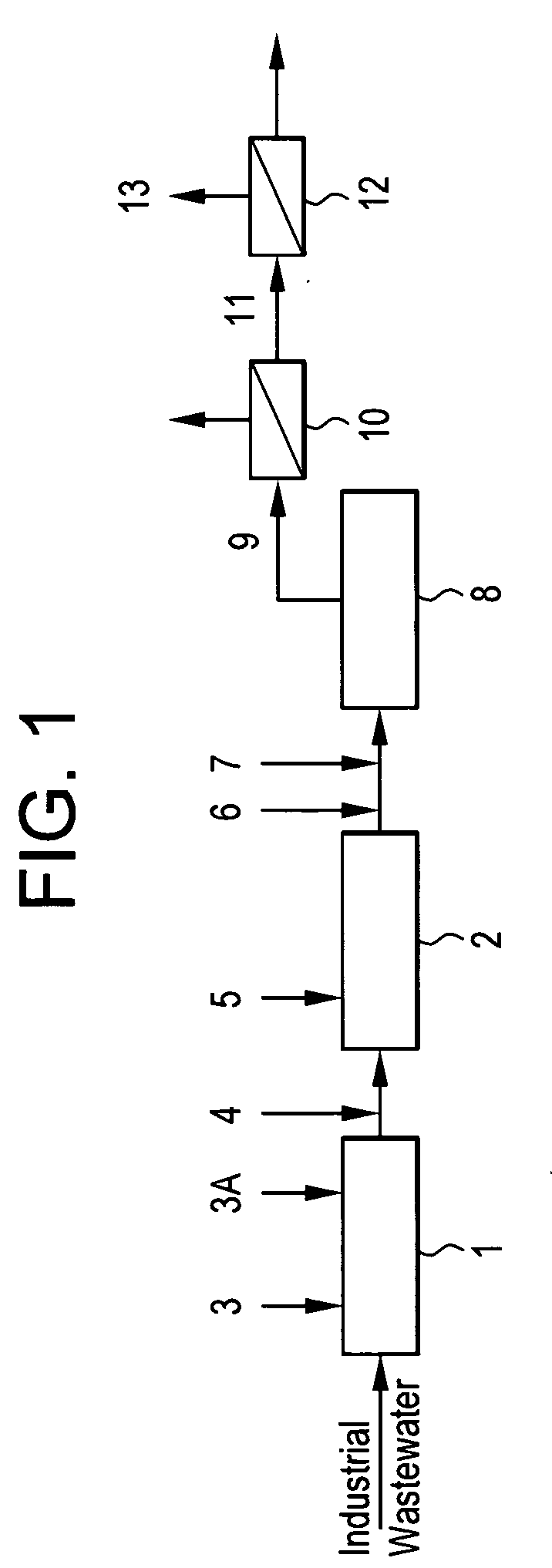Removing mercury and other heavy metals from industrial wastewater
a technology of industrial wastewater and heavy metals, applied in the nature of treatment water, multi-stage water/sewage treatment, membranes, etc., can solve the problems of fgd wastewater treatment always being a challeng
- Summary
- Abstract
- Description
- Claims
- Application Information
AI Technical Summary
Benefits of technology
Problems solved by technology
Method used
Image
Examples
example 1
[0062]A power plant scrubber wastewater containing 323 ppt of mercury was obtained from an Eastern US power plant and placed in a tank equipped with an overhead mixer. The pH was adjusted to 8.9 with 25% sodium hydroxide and a 100 ppm of ethylene dichloride-ammonia polymer, functionalized with carbon disulfide and available from Nalco Company, 1601 West Diehl Road, Naperville, Ill., was added and mixed for 30 minutes. After 30 minutes, 2 ppm of cationic polymer (copolymer of methyl chloride quaternized dimethyl aminoethyl acrylate and acrylamide copolymer with 50 mole % cationic charge) also available from Nalco Company, was added in the above treated wastewater and then mixed for 5 minutes. This treated wastewater was then filtered through 0.45 to 10 micron Millipore filter and then Hg level analyzed and compared with that in the scrubber wastewater. The results are shown in Table 1 below:
TABLE 1Mercury LevelTreatment(ppt)Untreated wastewater323Treated as above and filtered through...
example 2
[0063]A similar treatment protocol was used as in Example 1, but in this example, the power plant scrubber wastewater had 190 ppt mercury. This wastewater was also obtained from Eastern US power plant. In this example, 1.2 micron Millipore filter was used and the filtrate mercury level was 10.7 ppt.
PUM
 Login to View More
Login to View More Abstract
Description
Claims
Application Information
 Login to View More
Login to View More - R&D
- Intellectual Property
- Life Sciences
- Materials
- Tech Scout
- Unparalleled Data Quality
- Higher Quality Content
- 60% Fewer Hallucinations
Browse by: Latest US Patents, China's latest patents, Technical Efficacy Thesaurus, Application Domain, Technology Topic, Popular Technical Reports.
© 2025 PatSnap. All rights reserved.Legal|Privacy policy|Modern Slavery Act Transparency Statement|Sitemap|About US| Contact US: help@patsnap.com


